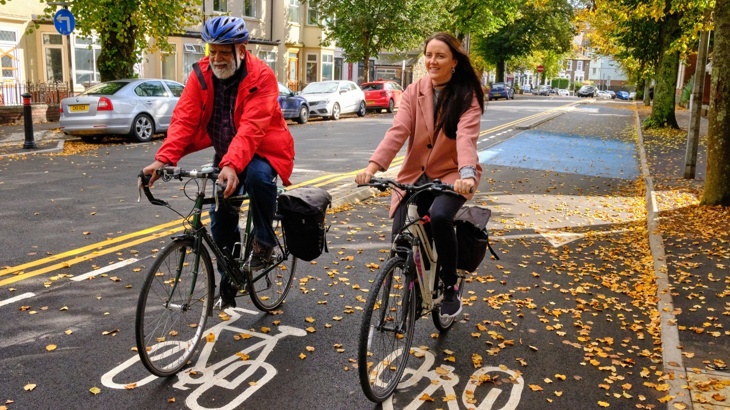Our London head of built environment, Giulio Ferrini explains why the UK Government’s £250m funding for street changes should be targeted at residential areas, town centres and main corridors. And as lockdown has transformed our lives in many ways, he reflects on why these changes are so vital as we head into a 'new normal'.

Lockdown has transformed our lives: with many working from home, we have rediscovered local shops, our parks have become our gyms and we have barely left our neighbourhoods.
With the improved air quality and quieter streets, we are more often interacting with neighbours and children are skipping ropes and learning how to ride a bike.
With physical distancing requirements in place for the foreseeable future, public transport providers have warned that buses, trains and tubes will only be operating at 15-20% of capacity.
As lockdown loosens and people start travelling again, this means new travel patterns and mobility choices.
Will car owners start driving more? Will there be an increase in private hire vehicle use? Will people look to cycling, walking, or emerging electric scooters?
Cities must act to shape the new normal
There is a collective recognition that we are at a pivotal moment: cities must act to shape the “new normal”, with new mobility patterns and lifestyles.
A lack of action will invariably lead to a tsunami of cars entering cities, leading to gridlock, air pollution and increased road danger, particularly for the most vulnerable, non-car owners.
The c-19 public health crisis will simply be replaced with another, potentially greater one.
On the other hand, cities can lock in some of the positive changes brought about by the pandemic: reduced travel and carbon footprint, greater community cohesion, increased active travel, improved air quality and more time with family.
Cities across the UK have already widened footways, closed roads to through traffic, created new pedestrianised areas and pop-up cycle infrastructure.
Some have increased pedestrian green times at junctions, removed pedestrian guard railing and extended hours of operations of bus lanes.
Even more ambitious plans have been announced, with low traffic neighbourhoods, timed closures outside schools, key corridors in Central London to become car-free and emergency cycle networks proposed in major cities.
Solutions such as these can both facilitate physically distanced travel and address the underlying challenges that we have been tackling for years: inequality, public health, social isolation, transport poverty.
If cities don’t implement similar measures, all of these issues will be accelerated and exacerbated.
Vital improvements
There has never been a greater appetite for change, with only 9% of the general public wanting a return to “normal”, pre-pandemic life.
And we suggest three key areas for improvement:
- Main corridors: with the need for social distancing, the most efficient, accessible and sustainable modes must be prioritised. This means less space for private vehicles and additional bus and cycle infrastructure.
- Town centres: space for people is the imperative. So far we have seen supermarkets and pharmacies spilling out onto footways. As cafes, restaurants, shops and pubs reopen with reduced capacity, creating additional space for customers will be essential for economic recovery. This can be done with timed pedestrianisation, conversion of car parking into cycle parking and additional outdoor seating.
- Residential areas: these must remain the places for physically distanced play, social interactions and exercise. Low traffic neighbourhoods can create safe walking and cycling routes to schools, green spaces and local shops.
Prioritise schemes on a needs basis
As stated by the Department for Transport, local authorities have the tools to quickly implement all the measures above.
Our recommendation would be to start with schemes that are already in the design process or where the community has already been engaged.
Beyond that, prioritise schemes on a needs basis, looking at car ownership levels, deprivation, air quality, public transport provision and access to green space.
Focus on residential areas
It is easy to focus on town centres or areas where people are most vocal in demanding change.
However, the greatest danger for mode shift may arguably be in more residential areas, with people switching their commuter lives to working from home, suburban, car-centric living.
Throughout this process, it’s impossible to overstate the importance of engaging local communities, co-creating the changes or at least building a narrative that links the emergency c-19 response to the wider issues we are aiming to tackle.
For these changes to transition from temporary to permanent, it’s also essential to implement comprehensive behaviour change strategies, as people shape their lifestyles around government guidelines.
Not every trip can be walked or cycled but many can, and every trip which is, creates more space for those who must drive or take public transport.
We must quickly transform our cities to ensure they emerge from this tragedy as fairer, stronger and healthier.
The original article was published in the Building Design magazine.





